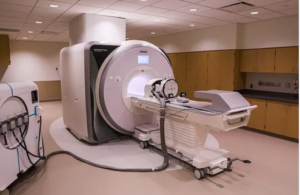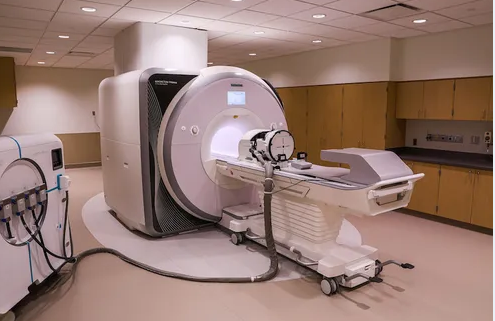Application of MRI-Guided Focused Ultrasound in Neurosurgery and Development in Treating Brain Conditions
MRI-guided focused ultrasound is a game-changer in neurosurgery. This novel treatment modality allows doctors to perform brain procedures with pinpoint accuracy, limiting damage to surrounding tissues. By focusing energy on targets, it offers new hope for patients with various serious neurological conditions.
This enables surgeons, through real-time MRI imaging, to view the area of treatment and verify that ultrasound is precisely channeled. Successes in a number of clinical cases prove this, and thus the application improved patient outcomes. As MRgFUS continues to evolve, it might set the standards for neurosurgery toward less invasive surgeries.
Applications of MRI-Guided Focused Ultrasound are increasing very rapidly due to the continuous research and improvements being made. The treatment is expected to transform the management of some brain disorders, and it should be in the interest of the patient and the medical provider that its benefits become a reality.
Key Takeaways
- MRgFUS provides optimized treatment to brain conditions with reduced tissue damage.
- Real-time imaging guides to the exact delivery of ultrasound energy.
- Future development is likely to extend its application in neurosurgery.
Principles of MRI-Guided Focused Ultrasound in Neurosurgery
One of the latest innovations in neurosurgery is MRI-guided focused ultrasound. This neurosurgery makes use of imaging and therapeutic ultrasound in combination in order to operate on conditions in the brain without making an incision. This technique provides, for a series of neurological conditions, an alternative treatment that is not invasive.
Theoretical Background
MRI-guided focused ultrasound surgery uses high-intensity sound waves that target an area in the brain. The ultrasound waves create heat; therefore, it may cause tissue destruction. This procedure also goes by the name thermal ablation. Along with MRI, doctors visualize the brain in real time and ensure targeting of the area that needs the treatment.
The technique exploits the principles of ultrasound physics. The sound waves negotiate tissues and can be focused to a pinpoint. When concentrated, they raise the temperature sufficiently to destroy or ablate unwanted tissue with great precision.
Equipment and Technology
The major apparatus in this technique include the MRI machine and the focused ultrasound transducer. The MRI provides clear images of the structures in the brain. These images guide the treatment.
The ultrasound transducer generates the sound waves, which are then introduced into the brain. It is aligned with complete accuracy so that the waves cross exactly at one place. Highly advanced computer systems monitor the process and automatically adjust the settings of the ultrasound.
Certain models of MRI machines are designed for this purpose. Special software is integrated into the machine to make the procedure as effective as possible. Each unit plays a crucial role in the safety and effectiveness of the procedure.
Safety and Efficacy
The most important thing in MRI-guided focused ultrasound is safety. In general, the method is well endured. The side effects of the method include headache and swelling at the site of treatment, which are temporary. Serious complications can happen, though they are infrequent.
There are several reports demonstrating that MRI-guided focused ultrasound could substantially reduce symptoms in selected patients with neurological disorders such as essential tremor or Parkinson’s disease. The majority of the treated patients exhibited long-term improvement. Guidance by MRI will enable minimization of damage to the healthy surrounding tissue and, therefore enhance patient safety during the treatment procedure.
Clinical Applications and Case Studies
MRI-guided focused ultrasound is making significant impacts in neurosurgery. This technology has specific uses in treating tumors, aiding functional neurosurgery, and exploring new therapies. The subsections that follow delineate these applications.
Tumor Treatment
MRI-guided focused ultrasound assists in precisely targeting the destruction of brain tumors. It allows the physician to deliver energy right to the tumor without causing damage to surrounding tissue.
Advantages:
- Non-invasive approach
- Shortened recovery time
- No general anesthesia
According to some studies, patients with gliomas and metastatic brain tumors have shown positive results. Most reported reduced tumor size and fewer side effects than traditional methods. This technique is considered especially beneficial for patients who cannot undergo surgical procedures.
Functional Neurosurgery
This technology, under functional neurosurgery, helps treat movement disorders, such as essential tremor and Parkinson’s disease. Even concentrated waves of ultrasound can disrupt abnormal nerve signals that cause these diseases by the doctors.
Patient Benefits:
- Minimally invasive
- Quick recovery
It has been observed that there is a substantial reduction of tremors and a significant quality-of-life improvement. These surgeries thus often help for a long period without the risks associated with invasive surgeries.
Emerging Therapies
MRI-guided focused ultrasound is one of the emerging therapies under study. The use of the procedure for various conditions like neuropathic pain and epilepsy is being researched. Ways are being found in which to enhance treatment efficacy and expand its indications.
Current Studies:
- Study for chronic pain management
- Seizure control evaluation
Several studies are now starting to shine bright, promising a brilliant future in this direction. Such progress may lead to the development of new, effective treatment options against conditions for which therapies are limited.

Also Read :
